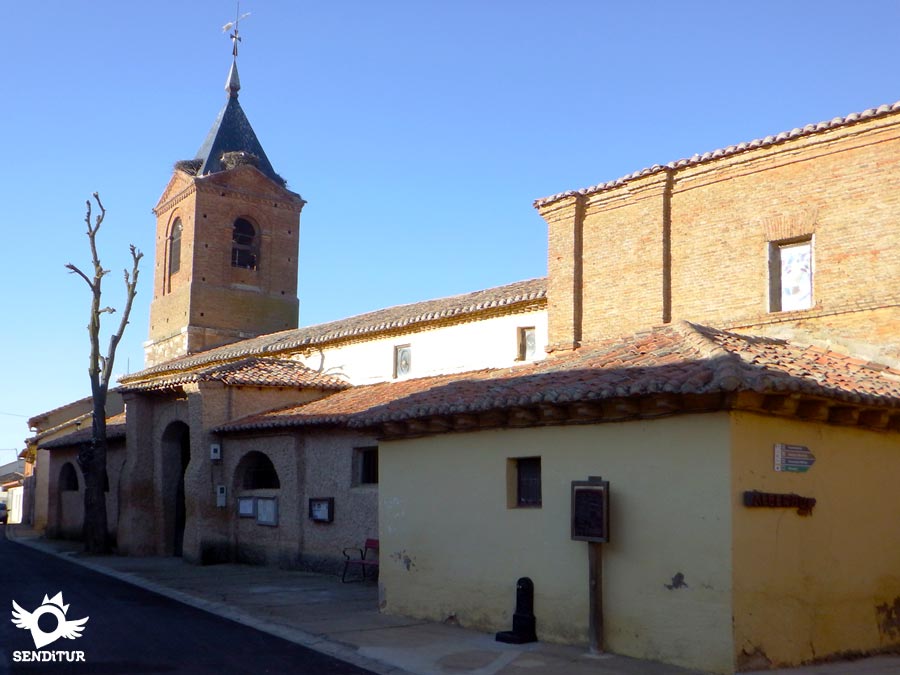It is located in the southeast of the province of León, on the Way of Saint James, in Tierra de Campos and belongs to the Judicial District of Sahagún. There are several theories about where the name El Burgo Ranero comes from, one of them attributes it to the name of its founder a certain Ranarius, but others say that the term is given by the amount of frogs that inhabited the lagoons in the place. In the year 1126 already appear documents in which the town is cited as Burgo de Sahagún, due to the settlement of several merchants from that locality who wanted to take advantage of the boom of the Way of Saint James. It is in the year 1962 when the town was declared a Historic Site.

In El Burgo Ranero its houses, with a popular architecture of mud, adapts to the Jacobean street that crosses it. A little further away is the Barrio de la Estación, which is the enclave of the train station that gives it its name. But its main construction is the parish church of San Pedro, a modest temple with a Renaissance altarpiece from the second half of the 16th century. A beautiful Romanesque carving that was in the church is now preserved in the Museum of the Cathedral of Leon.
El Burgo Ranero celebrates its patron saint festivities on the 29th of June in honour of San Pedro Apóstol, and also celebrates, with a mass and an auction of a bouquet of roscas, the patron saint of the farmers, San Isidro, on the 15th of May. On Easter Monday the Barrio de la Estación celebrates its own fiesta, this time dedicated to the Sagrada Familia.

On the eve of San Pedro Day, the village boys place a bouquet under the windows of the girls of marriage age. That same day, at night, a large bonfire is lit, and the following day, the patron saint's feast day, and during the main mass, the image of the saint is paraded.
In El Burgo Ranero, their markedly agricultural character leads them to celebrate four prayers a year to bless the fields, one on St. Mark's Day, and the others on Monday, Tuesday and Wednesday before Our Lady's Ascension, in these blessings and prayers the litanies are sung in Latin.

Legend has it that in the lagoon of dark waters that is on the edge of the village once inhabited all kinds of reptiles and amphibians, being such the fear and repugnance that this caused the inhabitants who decided to move a little away the location of their houses. One afternoon, at that time, a pilgrim arrived at the place and asked a child for a place to spend the night, the boy offered his house but warned him of the inconvenience of being near the lake, the pilgrim did not give importance to the fact and stayed at the child's house. The sound of frogs and toads was thunderous, but the pilgrim after supper retired to rest in the room that had been offered to him. The next morning before saying goodbye, he wanted to give his occasional innkeeper an apple, but he told him that when he had finished eating it, he would throw his heart into the lake and then everything would be clearer. The boy, though surprised, followed his advice and when he threw the heart of the apple into the lake his waters became clean, and from the innumerable bugs there were only a few frogs left. Even today, a part of the lake remains clean, without any weeds and the croaking of the frogs is soft, such that it seems that the miracle took place yesterday. Since then the lagoon has been known as "The Apple Lagoon".
The Burgo Ranero is in the A-231, highway of the Way, that joins Burgos and León. We can also get to El Burgo Ranero by the LE-5703 that connects with nearby towns.
There is bus service, but its frequency is not daily, which connects El Burgo Ranero with León.
El Burgo Ranero is connected by rail, with daily service, with León as well as with Valladolid.
SENDITUR is not responsible for any variation in the information described, as well as for the misuse of its guides and recommends that everyone be responsible and prudent in carrying out the activity. Likewise, we invite you to document yourself with books and specialized guides to complement the information described. From the commitment of SENDITUR with Nature and the respect to the balance of the environment, SENDITUR urges you to travel in a responsible way, with low environmental impact and respecting at all times the Natural, Cultural and Social environment wherever you go. For any suggestion, SENDITUR invites you to send an email to .
Continue watching …